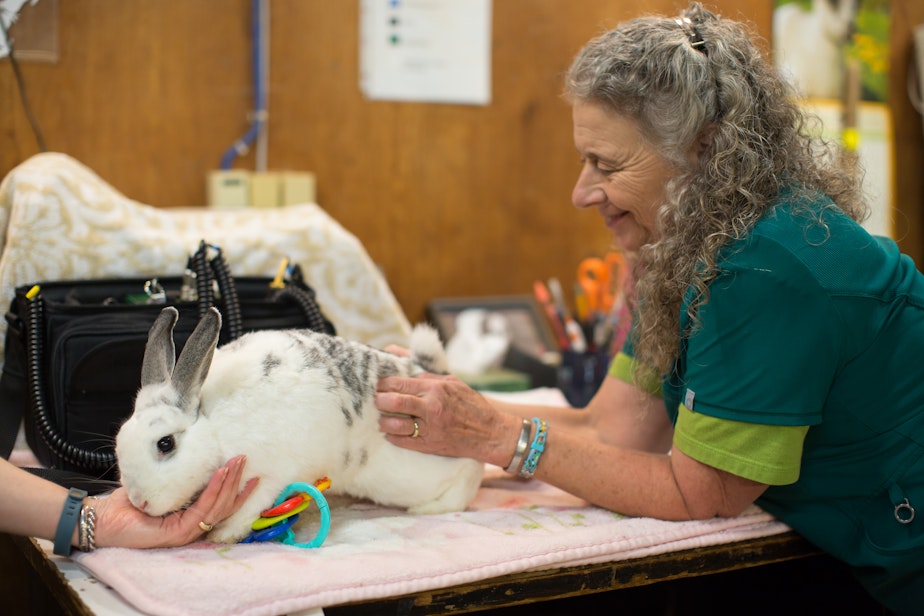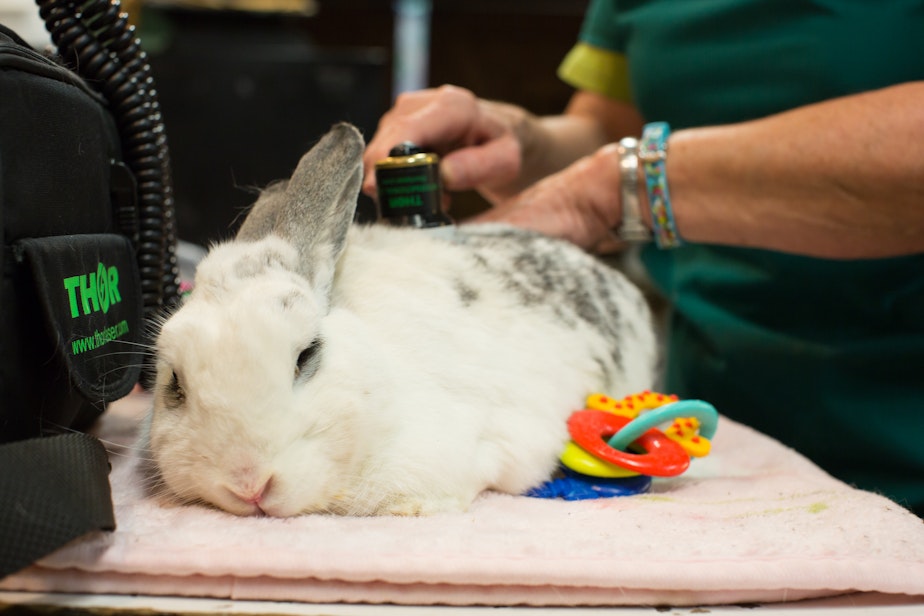Bunnies and penguins get arthritis too. How Seattle's zoo treats them
How do you treat a penguin with arthritis?
First, you watch him walk.
“See how he tends to walk with his toes in?” says Harmony Frazier, a veterinary technician at Seattle’s Woodland Park Zoo. She’s assessing Mr. Sea’s gait.
Mr. Sea is a 27-year-old male penguin at the zoo. He’s got bone spurs, calcification in his tendons and feet, which makes it hard to walk.
Frazier applies laser therapy on Mr. Sea, starting with his foot. Mr. Sea stands still while zookeeper Celine Pardo holds him in support. After 20 seconds, Frazier moves the wand to his lower back.

“It actually works at a cellular level to decrease inflammation, to promote healing as well as to dull any nerve sensations for pain,” Frazier says.
Animals! They’re just like us. They, too, are getting older and have joint pain or soft tissue injuries. At Woodland Park Zoo, older animals get physical rehabilitation to help them with the aches and pains of old age.
Frazier is part of a growing number of providers receiving specialized training in animal rehabilitation —that’s physical therapy for animals. She’s also licensed in small animal massage. In her 38 years with the zoo, she’s worked with a lot of animals, many since birth.

Just as medicine has benefited humans, it has helped animals live longer, Frazier says. She wanted to provide the kind of care that would help their quality of life. One of her early cases was a wallaroo, cousin to a kangaroo. The wallaroo had back issues and couldn’t walk.
“We spent every single day, two to three times a day and worked with him,” Frazier says. “He was hopping when we were finished.
“He inspired me to go to school and actually get certified and know what I was taking on.”

But unlike people, animals may not be able to communicate their aches and pains. So zookeepers use pain scales developed in veterinary medicine, which rely on several things—
“Body posture and attitudes and interests in their day and eating and weight gain or weight loss,” Frazier says. “They’re much more counted on when you’re working with non-verbal animals.”

Woodland Park Zoo Joins a handful of zoos around the country that provide rehabilitative services for their geriatric residents. The Association of Zoos and Aquariums says zoos have had to adjust their care protocols to accommodate aging animals.
Back in Frazier’s clinic, Mr. Sea’s laser therapy session is done. He gets a pat on the back.
“You’re a good guy,” Frazier says. “See you in a week!”
Pardo offers him a fish treat. But Mr. Sea turns toward the door.
“You’re ready to go back, huh?” she laughs.
Mr. Sea was one of the more compliant ones. Some animals really squirm and won’t stay still for long. Frazier says they have different personalities, just like humans.
As Mr. Sea walks back toward his exhibit near the west entrance of the zoo, Frazier calls out, “Bye, bye, buddy! Go for a swim, walk it out!”

